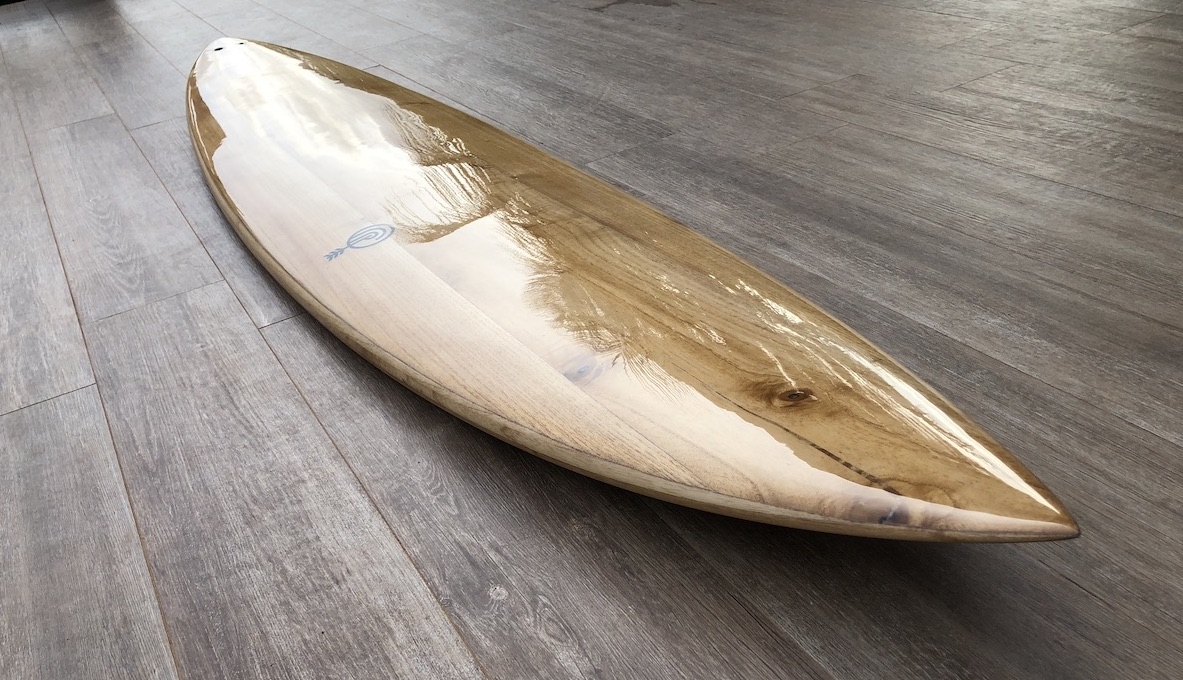Tags: Surfing, Wood, wooden surfboards, surfboards, Online Workshop, Sustainability,
It's no secret that choosing the right wood for your board makes all the difference in your wave performance, weight, and even aesthetics. Not to mention the numerous benefits of using wood for construction, which is a renewable and sustainable source.
However, with all these conditions, it is very normal to be in doubt about which is the ideal wood to build surfboards. So what are the sustainable surfing woods? What will be the perfect wood to make the shapes of each piece you are going to use?
Surfboards are supposed to be light, so this is the major challenge when the topic is finding the ideal wood…
You can find several kinds of wood throughout the world to be used in shipbuilding, but the two most suitable are Paulownia, which in addition to being light, is resistant and easy to work with, and Balsa, which is the lightest of all, however, it is necessary to reinforce it from the inside, which is more malleable and soft, making the construction process a little difficult.
However, associated with the wood itself, there are other factors to consider: how much is needed? How much does it cost to make a wooden plank? How much wood do you need to buy to make a certain number of planks?
First of all, we use two types of wood to make the hollow boards. One for the skeleton, and one for the rest of the board.
The skeleton can be flexible plywood or low-density marine plywood, whose woods are Okoume, paulownia, birch, among others.

The most important thing is to choose a plywood that is of good quality and low density, that is, as light as possible. The thickness of the plate to make the skeleton must vary between 5 and 6 mm. Because less than 5mm loses surface contact, and greater than 6mm adds a lot of weight to the board. So the ideal is between 5 and 6 mm.
The main wood is what we are going to use for the rest of the board. It has to be a low-density wood, and, as said before, Paulownia is best, but other light woods can also be used.

For example: Balsa, Cedar, Cryptomeria, among other low density conifers.
There are a multitude of low-density woods that can be used, but paulownia is the most suitable. The good thing about paulownia is that it can be found in many parts of the world. Originally from Asia, it can be cultivated as reforestation in several countries.
On our blog there is an article that explains everything about paulownia,
So, what sizes do we use to make surfboards?
Hollow wood planks have the great advantage of using little wood, resulting in most of the plank being simply air.
To make the hollow surfboards we use 3 sizes of wood
4 to 5 mm boards for deck and bottom
10 mm strips to build the rails.
And, small pieces of solid wood in some parts to make the stringers and ornaments, which give a final and authentic touch to your surfboard!
And what is the process for getting a "one-inch-thick" board of wood in the correct measurements to use on the surfboard?
For example, if you don't have the necessary tools, take it to a lumberyard to do the work, as they are large machines, but they can be found in any woodworking shop, lumber shop or a sawmill.
This process consists of first splitting the one-inch-thick boards. This process is known as resaw. For this you can use a band saw or a circular saw.
To obtain the 4mm planks we resaw the one inch board into 3 parts. To get the rails strips, we split the one-inch board in two.
The next step then is to adjust the thickness. The tool used for this is the bench planer, or, thickness planer, where we lower the thickness of the pieces for 4 or 5 mm planks. And the boards to make the rails strips to 10mm.
Sometimes the bench plane is very rough, and it cannot reach the thickness of 4mm without breaking the pieces. Then a belt or drum sander can be used for this detail.
After this step, we already have the boards for the bottom and deck boards, all that remains is to cut the 10mm boards to obtain the strips for the edge. For this we use the circular saw, making 10mm cuts on the 10mm boards. Thus forming strips of square section of 10x10mm.
In this list, we already have all the woods needed to make the most modern and sustainable Hollow Wooden Surfboards!
Making a wooden surfboard is not just manual work! It's also about you connecting with nature and promoting sustainability. Not to mention the countless polluting and toxic waste that you avoid to produce, just by building a Wooden Surfboard! The oceans thank us to this big evolution and conscience!
Receive news by email: